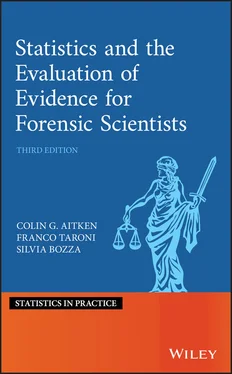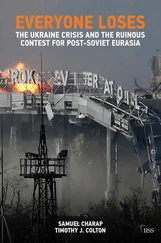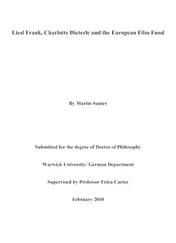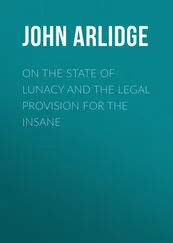1 ...6 7 8 10 11 12 ...37 Data analysis is covered in Chapter 7. The material from Chapter 9 on discrete data, Chapter 10 on continuous data, and Chapter 11 on multivariate analysis of the second edition is brought together into this one chapter for greater coherence. In the 15 years since the publication of the second edition, there has been considerable work on the assessment of performance of the models developed for the evaluation of evidence. This aspect of the topic is the subject of the final chapter, Chapter 8. The material on fibres and on DNA profiling from Chapters 12 and 13 of the second edition are dispersed throughout the book.
Reference is made on occasion to probability values of statistical distributions. We do not mention packages each time this is done, leaving the reader to use their favourite package. We have chosen the statistical package R. This is a free software environment for statistical computing and graphics. It compiles and runs on a wide variety of UNIX platforms, Windows and MacOS. See https://www.r-project.org/for further details. We make no mention of paper versions of statistical distributions, such as in books of tables, assuming that forensic scientists have access to computer systems that can access appropriate statistical software.
During the preparation of this book, several people have died to whom we owe a debt of gratitude for all that they have done for the subject and for our own careers. We remember with thanks the life and work of Annabel Bolck, Stephen Fienberg, David Lucy, Mike Redmayne, David Schum, and Peter Tillers.
We are especially grateful to Alex Biedermann for his suggestions and helpful advice to us all throughout the preparation of this book. Others who have helped and to whom we are very grateful for their support and advice include:
Christophe Champod, Lorenzo Gaborini, Paolo Garbolino, Tacha Hicks, Graham Jackson, Agnieszka Martyna, Anders Nordgaard, Daniel Ramos‐Castro, Marjan Sjerps, Amy Wilson, and Grzegorz Zadora.
Whilst we have received much advice, we accept full responsibility for any errors of commission or omission. The Leverhulme Trust, through grant number EM2016‐027, provided invaluable support for this work through the award of a research fellowship to one of us (CGGA) who also thanks the School of Mathematics of the University of Edinburgh for its support. FT thanks the Swiss National Science Foundation and the Fondation pour l'Université de Lausanne for their constant support of forensic research which has permitted the development of many parts of the book. He also thanks the School of Criminal Justice of the University of Lausanne for its support. SB thanks the University Ca' Foscari of Venice for its support.
We thank Jay Kadane for agreeing to write a foreword. He has been an inspiring contributor to the subject over many years and we thank him for his support. His foreword provides a summary of the reasons why we wrote this book. We have tried to offer solutions with explanations on how uncertainty in the evaluation and interpretation of forensic scientific evidence may be managed in the judicial process. We leave it to others to determine by how much we have succeeded.
We also thank the staff at John Wiley and Sons Ltd for their help and support in bringing this project to fruition.
Last, but by no means least, we thank our families for their support and encouragement.
C.G.G. Aitken, F. Taroni and S. Bozza
Edinburgh, Lausanne and Venice
2020
Preface to Second Edition
In the Preface to the first edition of this book, it was commented that the role of statistics in forensic science is continuing to increase and that this was partly because of the debate continuing over DNA profiling which looked as if it would carry on into the foreseeable future. It now appears that the increase is continuing and perhaps at a greater rate than nine years ago. The debate over DNA profiling continues unabated. We have left the minutiae of this debate to others restricting ourselves to an overview of that particular topic. Instead, we elaborate on the many other areas in forensic science in which statistics can play a role.
There has been a tremendous expansion in the work in forensic statistics in the nine years since the first edition of this book was published. This is reflected in the increase in the size of the book. There are about 500 pages now when there were only about 250 in 1995, and the bibliography has increased from 10 pages to 20 pages. The number of chapters has increased from 8 to 14. The title remains the same yet there is more discussion of interpretation, in addition to new material on evaluation.
The first four chapters are on the same topics as in the first edition though the order of Chapters 2 and 3 on evaluation and on variation has been exchanged. The chapter on variation, the new Chapter 2, has been expanded to include many more probability distributions than mentioned in the first edition. As the subject has expanded so has the need for the use of more distributions. These have to be introduced sooner than before and hence the exchange of order with the chapter on evaluation. Chapter 4has an additional section on the work of early twentieth‐century forensic scientists as it has gradually emerged how far ahead of their time these scientists were in their ideas. Three new chapters have then been introduced before the chapter on transfer evidence. Bayesian inference has an increasing role to play in the evaluation of evidence yet its use is still controversial and there have been some critical comments in the courts of some of its perceived uses in the legal process. Chapter 5provides a discussion of Bayesian inference, somewhat separate from the main thrust of the book in order to emphasise its particular relevance for evidence evaluation and interpretation. Appropriate sampling procedures are becoming ever more important. With scarce resources, sampling provides a means of achieving almost the same inferences but with the expenditure of considerably less resources. It is important, though, that correct inferences are drawn from the results obtained from a sample. In some jurisdictions and some types of crime, such as that of drug smuggling in the United States, the quantity of illicit material associated with the crime is a factor in the sentencing. Again, if only a sample has been taken from the initial consignment, then correct inferences about the quantities involved have to be made. These are the topics of Chapter 6. Chapter 7is a consequence of the expansion of the book to consider interpretation. This includes a discussion of work on case assessment and interpretation done since the appearance of the first edition. Chapter 7also includes brief comments on various evidence types for which statistical evaluation is beginning to be developed. This is in contrast to those areas such as glass, fibres, and DNA profiling that are considerably more developed. Fibres and DNA each have chapters of their own, Chapters 12 and 13. Glass evaluation provides many examples throughout the book as it provides a context for much of what is discussed and it was felt this was better done at these places in the book rather than gathered together in a separate chapter. Chapters 8, 9, and 10 on transfer evidence, discrete data, and continuous data are updated versions of chapters on the same topics in the first edition. Correct analysis of multivariate data is essential in forensic science as such data become more prevalent, for example, in the consideration of the elemental composition of glass or the chemical composition of drugs. Multivariate analysis is discussed in Chapter 11 with a worked analysis of a two‐dimensional example. An appendix gives a brief description of the underlying mathematics of matrix algebra. Chapters 12 and 13 are the only chapters in the book that are specific to particular types of evidence, fibres and DNA profiling, respectively. Chapter 13 is a completely new chapter compared with the corresponding chapter in the first edition, such are the advances made in DNA profiling since the first edition appeared. It is still only a brief introduction to the topic. Other more specialised books, cited in Chapter 13, are recommended for the serious student of DNA profiling. The last chapter, 14, is an introduction to Bayesian networks, an exciting new topic for forensic science and evidence evaluation in general, predicted in the Preface to the first edition. A graphical representation, as provided by a Bayesian network, of the different types and pieces of evidence in a case aids considerably the understanding and analysis of the totality of the evidence. In addition to the bibliography and indexes, a list of notation has been provided at the end. It is hoped this will enable the reader to keep track of the symbolism which is a necessary part of ensuring clarity of exposition.
Читать дальше












